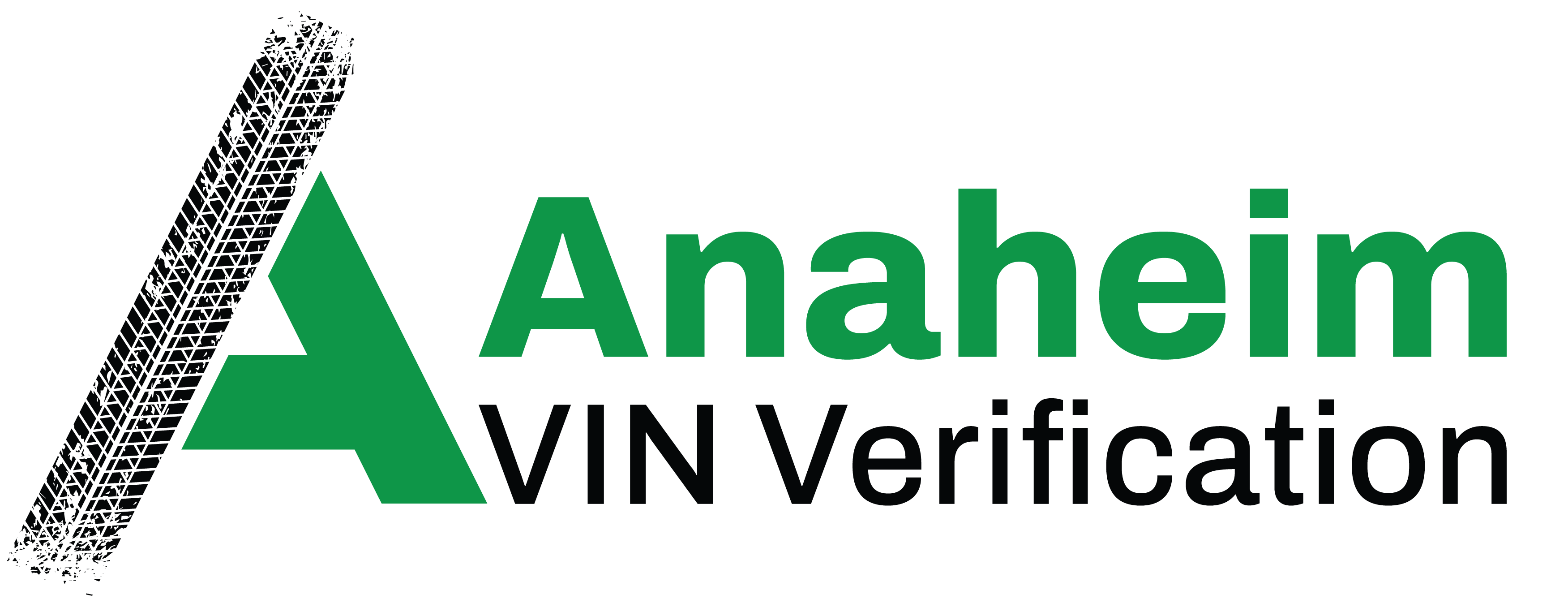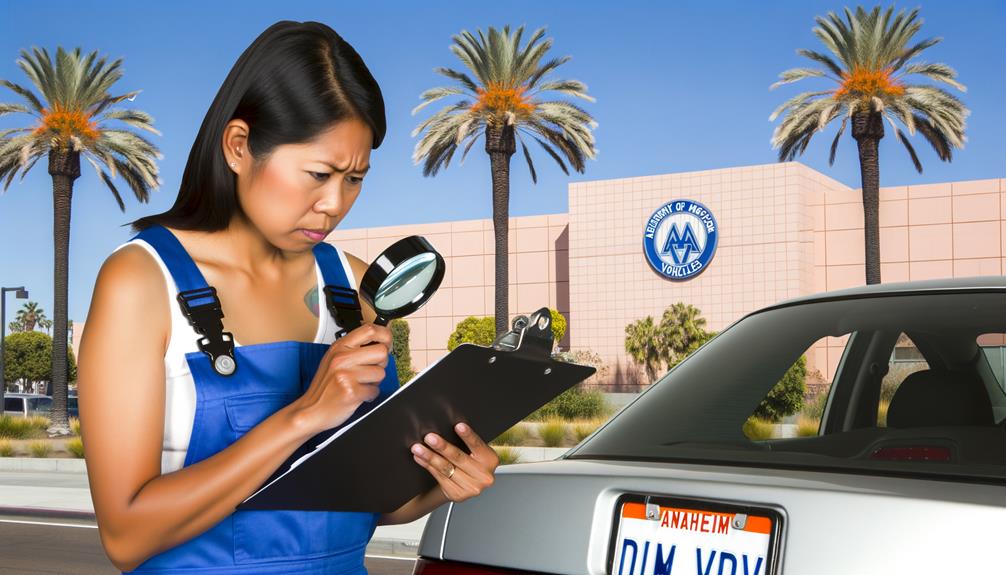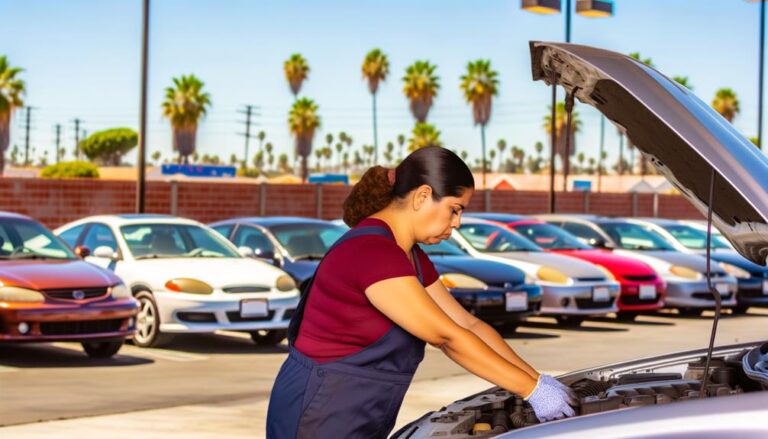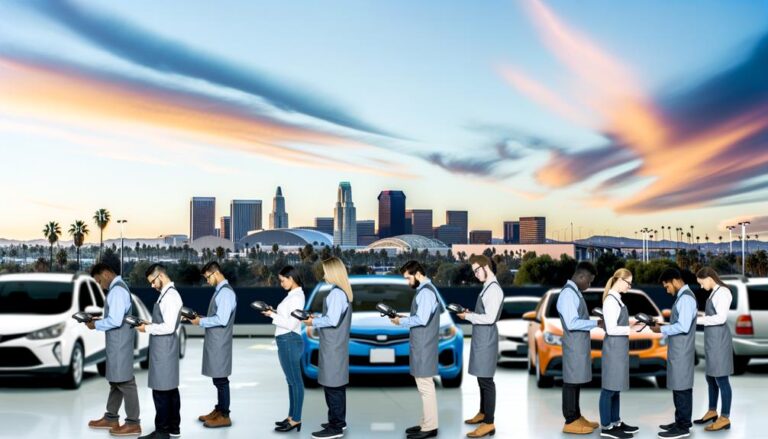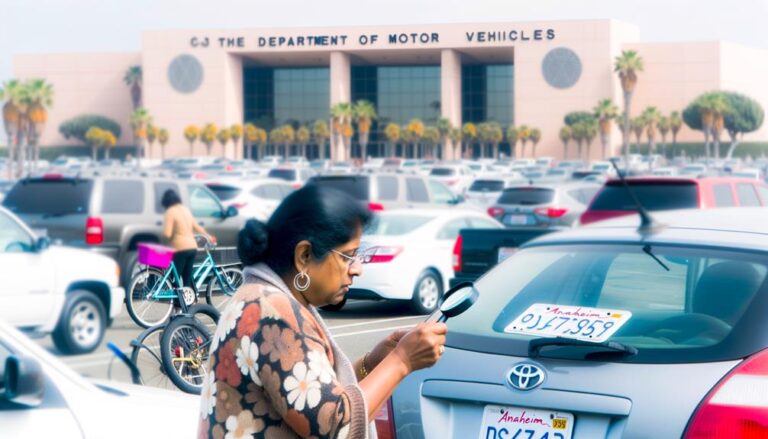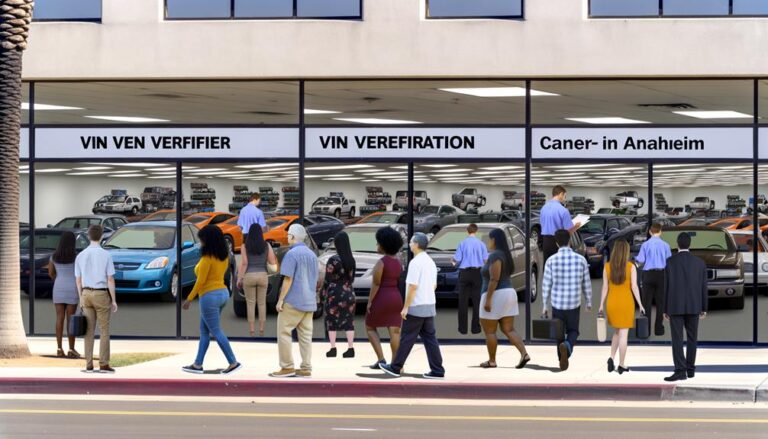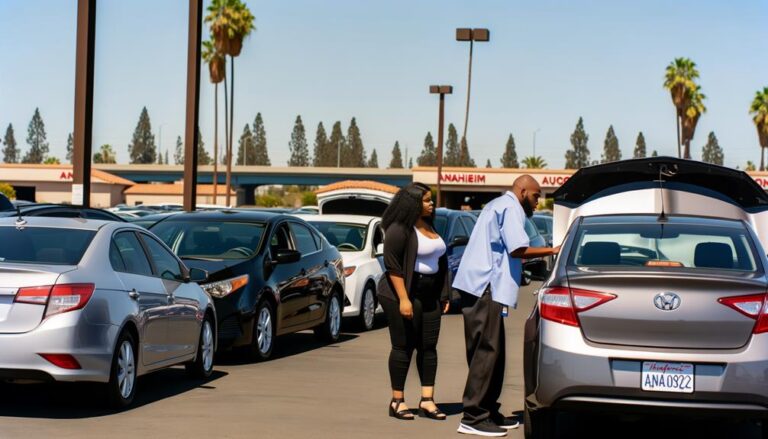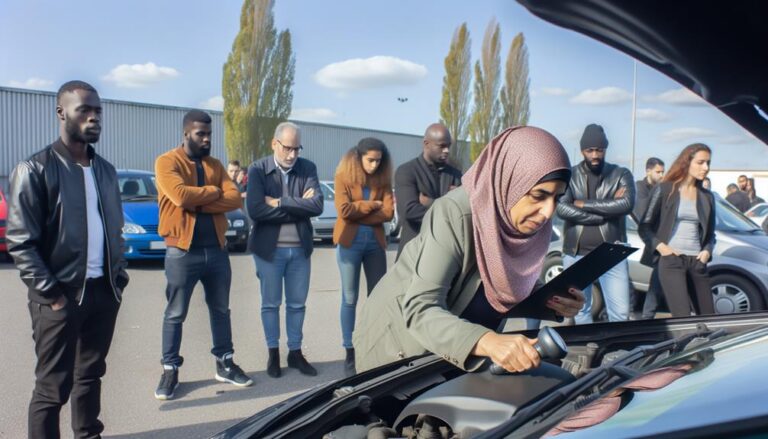The Role of VIN Verification in Registering Salvaged Vehicles in Anaheim
As you explore the process of registering a salvaged vehicle in Anaheim, you'll find that VIN verification is a pivotal step. This procedure isn't just a formality; it's a safeguard against potential fraud and ensures that your vehicle's identity checks out against official records. You're required to have your vehicle inspected by authorized DMV representatives or licensed verifiers, who will scrutinize your vehicle to ensure it aligns with legal and safety standards. But have you ever considered what discrepancies might arise during this inspection, or how they could impact your registration process? Let's unpack the potential challenges and solutions that could make a difference in your experience.
Understanding VIN Verification
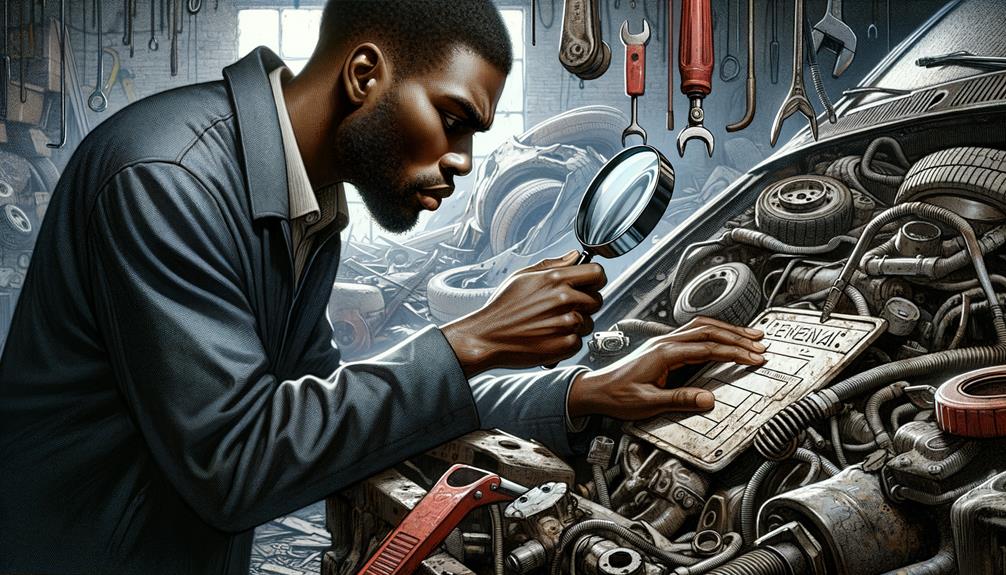
VIN verification is essential in ensuring that your salvaged vehicle's identity matches its documentation and complies with state regulations. You're stepping into a process that not only secures your freedom to drive but also protects you from potential fraud.
When you bring your vehicle in for VIN verification, authorized DMV representatives or licensed verifiers will conduct a thorough check. They're looking to see that your vehicle identification number exactly matches what's on your paperwork.
This isn't just about ticking boxes; it's a crucial step to ensure your vehicle is up to scratch with California safety regulations and ready for the road. The verifier will fill out a REG31 form, which is your golden ticket in proving the inspection's authenticity and thoroughness. Remember, this form is a key piece of your legal registration puzzle.
As part of this process, you'll need to provide proof of ownership, any prior titles, and relevant inspection certificates. These documents are vital—they're your proof that the vehicle is truly yours and meets all legal standards.
Through VIN verification, you're not just ensuring compliance; you're taking a substantial step toward safeguarding your right to drive freely and securely in your restored vehicle.
Salvage Vehicle Definition
A salvage vehicle is one that an insurance company has deemed too costly to repair, typically due to extensive damage from accidents, floods, or theft recoveries. If you're eyeing a salvage vehicle in California, understanding the California DMV requirements for bringing such a vehicle back to a roadworthy condition is crucial.
You can't just fix up a salvage vehicle and hit the road. First, you'll need to ensure it meets all safety standards—a non-negotiable aspect of the registration process. This involves a series of inspections and detailed documentation designed to confirm the vehicle's legality and functionality.
Don't overlook VIN verification; it's essential. This step ensures that the vehicle's identity matches the documentation provided, safeguarding against fraudulent claims about its past condition or ownership.
As you venture into restoring a salvage vehicle, remember that proof of ownership is a must. The California DMV won't just take your word for it; they require solid evidence that the vehicle is legitimately yours.
This process underscores the importance of transparency and adherence to the rules to ensure you're truly free to navigate the roads without legal hassles.
Required Registration Documents

To register your salvaged vehicle in California, you'll need to complete and submit an Application for Title or Registration (REG 343).
Along with this application, you must provide a salvage certificate, which serves as your proof of ownership and confirms the vehicle's history as a total loss.
Additionally, VIN verification is crucial in this process. You'll need to fill out specific verification forms like REG 31 or CHP 97C. These forms are essential to establish the vehicle's identity and ensure it meets safety standards post-repair.
Don't forget, the DMV will want to see your Brake and Light Adjustment Certificates too. These documents verify that your vehicle's lighting and braking systems aren't just operational but comply with the state's stringent safety norms.
Lastly, depending on your vehicle's condition and history, a smog certification might also be necessary. This certification is part of California's commitment to maintaining low emissions and is typically required for most vehicles.
As you gather these documents, remember that each one is a step toward regaining your freedom on the road with your restored vehicle. Ensure you have all these forms in hand before heading to the DMV, to streamline your registration process.
Inspection Process Overview
You'll need a referral from the DMV to schedule your CHP inspection, which is crucial for verifying the VIN and ensuring your vehicle meets safety standards. This step is non-negotiable if you're looking to hit the road with full confidence in your salvaged vehicle's legality and functionality.
Once you've got your DMV referral, the CHP inspection serves as a pivotal checkpoint. Here, officers will meticulously compare the VIN on your vehicle against the supporting documents you provide. This VIN verification process ensures that the identity of your vehicle matches official records, protecting you from potential legal headaches.
Additionally, your vehicle must demonstrate its adherence to safety norms. The CHP will scrutinize your car to confirm safety compliance, which includes checking critical systems and components.
Don't forget, passing the brake and light inspections at a licensed station is also part of this journey. You'll need to present certificates from these inspections during the registration process.
Additional Registration Criteria
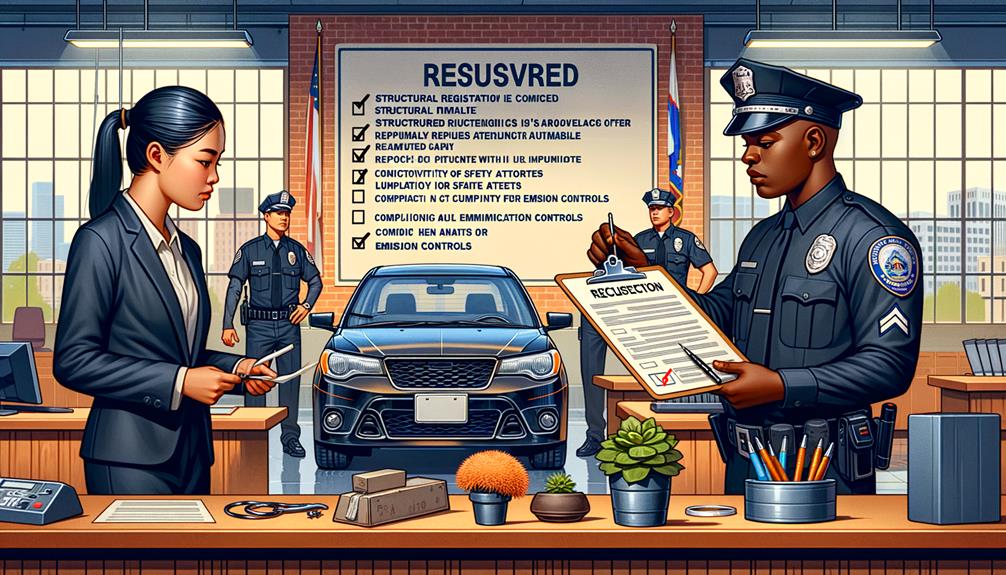
Once you've passed the inspection, submitting the Application for Title or Registration (REG 343) along with your salvage certificate is your next step in registering a salvaged vehicle in Anaheim. This essential document, paired with your vehicle's salvage certificate, brings you closer to reclaiming the freedom of the road with your restored ride.
Next, ensure your VIN verification (REG 31 or CHP 97C) is complete. This proves your vehicle's identity and confirms it meets all necessary safety standards. It's not just about compliance; it's about ensuring your peace of mind as you navigate Anaheim's streets.
Don't forget to acquire the Brake and Light Adjustment Certificates. These aren't just formalities; they're indicators that your vehicle is safe and ready for action, meeting all California regulations. If your restored vehicle includes commercial vehicles, you'll also need to secure any necessary weight certificates.
And here's another critical step: the smog certification. Unless exempt, this certification is a must to ensure your vehicle is environmentally sound.
Smooth Registration Tips
Gathering and organizing all your required documents, including the salvage certificate and REG 343, streamlines the registration process for your salvaged vehicle. Start by ensuring every piece of paperwork, such as the REG 31 or CHP 97C forms for VIN verification, is in order. This prep work sets you free from potential hiccups and speeds up the process at the DMV.
Once your paperwork is sorted, schedule your CHP inspection without delay. A timely DMV referral for this inspection not only adheres to compliance requirements but also respects your time, reducing the wait. Remember, salvaged vehicles must pass these checks to confirm vehicle identification and safety standards, so it's in your best interest to stay proactive.
Don't forget to secure Brake and Light Adjustment Certificates. These are crucial in verifying that your vehicle meets all safety norms, a non-negotiable aspect of the registration process. Keeping a copy of all documents and certificates isn't just good practice; it's your safeguard against potential discrepancies or queries from the DMV.
Stay updated on any changes in the registration requirements for salvaged vehicles. Being well-informed empowers you to navigate this process with confidence, ensuring you're back on the road with full rights restored to you swiftly.
Mobile Verification Services
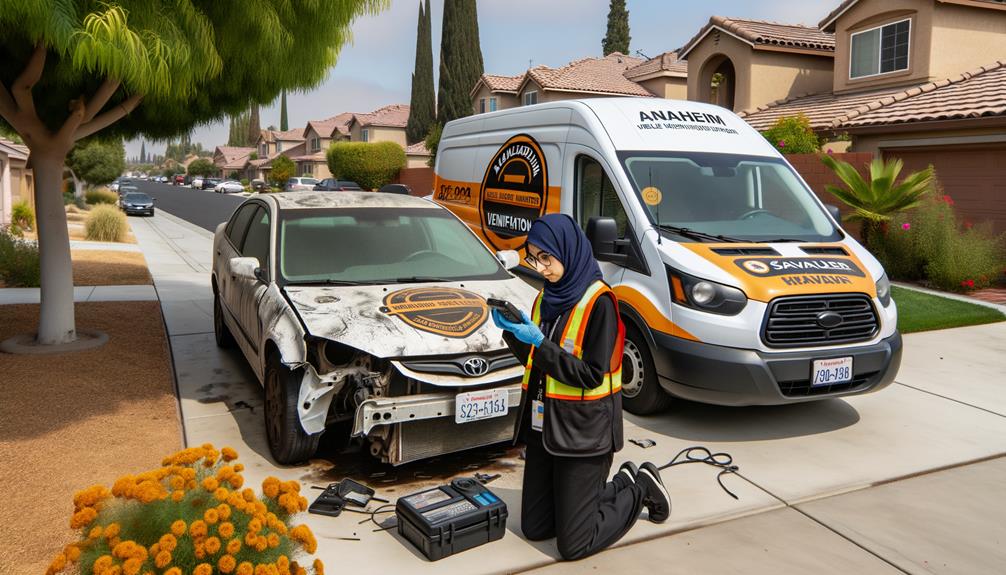
Mobile VIN verification services provide a convenient option for salvaged vehicle owners in Anaheim, allowing you to bypass the usual DMV office visit. These services cater to a variety of vehicles, including cars, trucks, motorcycles, and trailers. You'll find this flexibility invaluable as you navigate the complexities of California DMV regulations.
With mobile VIN verification, the journey to re-registering your salvaged vehicle becomes significantly smoother. You're not just saving time; you're customizing the experience to fit your schedule. Appointment scheduling is notably flexible, enabling you to set up a verification at your convenience, avoiding the long lines and wait times at the DMV.
Moreover, these services are equipped to handle the unique challenges of salvaged vehicles. Whether it's dealing with intricate VIN placements or ensuring all necessary documentation is correctly prepared, mobile verifiers are up to the task. This attention to detail ensures that the verification process adheres strictly to California DMV regulations, giving you peace of mind.
In Anaheim, opting for mobile VIN verification means embracing a solution that respects your time and freedom while ensuring your vehicle meets all legal requirements for registration.
Pricing and Quotes
Understanding the costs associated with VIN verification can help you budget effectively for the registration of your salvaged vehicle.
In Anaheim, the local verification rate is a flat $85.00. If you're considering a mobile VIN verification, you'll find that while the base rate starts at $125, there might be additional fees if you're located far from the provider's base. This flexibility allows you to choose a service that best fits your schedule and location needs.
When you're looking at pricing and quotes, it's straightforward. A simple form submission on the service provider's website will get you a prompt response, detailing not just the costs but any applicable discounts. This is especially useful if you need bulk verifications for multiple vehicles, which is particularly advantageous for businesses managing fleets of salvaged vehicles.
Frequently Asked Questions
What Does CHP Check for VIN Verification?
You're wondering what CHP checks during VIN verification? They ensure the VIN matches official documents, verify its placement on your vehicle, and confirm details like make, model, and safety compliance. It's all about authenticity and safety.
How to Register a Car With a Salvage Certificate in California?
To register your salvaged car in California, you'll need to submit a REG 343 form, salvage certificate, VIN verification, Brake and Light Adjustment Certificate, and possibly a smog certification to the DMV.
Why Do I Need a VIN Verification in California?
You need a VIN verification in California to ensure your vehicle's history and paperwork are accurate, safeguarding against fraud and confirming it meets safety and environmental standards before you can register it.
How Much Does a VIN Verification Cost in California?
In California, you'll pay about $75 for a VIN verification at a location, or up to $125 for mobile service. However, AAA members and those visiting the DMV or CHP can have it done for free.
